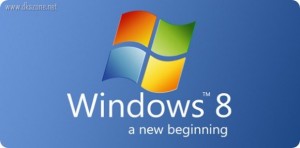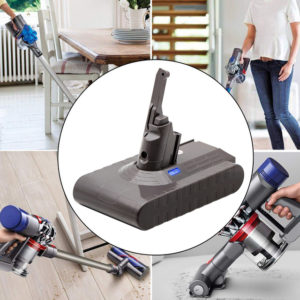On many occasions since the inception of the phrase, I have taken issue with the notion of “post-PC“. Maybe it’s because I’m a multi-monitor user with delusions of productivity, or maybe it’s because I’m stuck in the mindset that post-PC is a negative thing, or maybe I just have a predisposition against buzzwords that exist for no good reason. Whatever the reason, I don’t think that the current offerings from the tablet makers, regardless of platform, offered nearly enough to replace anybody’s PC, much less mine. During the Microsoft Build conference, we were given a detailed preview of the upcoming Windows 8 platform and all of the changes that were brought to light. At the Build conference, we were shown what I feel is a much more significant step toward the notion of “post-PC”.
Unified User Interface
At the end of the day, post-PC has nothing to do with getting rid of the PC. It’s about creating a series of devices that can serve as a PC for the average consumer. Creating a user interface that can serve both the technical user and the consumer is a delicate balancing act. If you are too limiting to the technical user, it becomes useless. If you are too complicated for the general consumer, it becomes useless. Microsoft’s Metro UI is the closest thing I have seen so far to balancing these two worlds. The User Interface for Metro is simple, and mildly akin to the Windows Phone 7 Live Tiles, but so much more. If you are not a fan of the new UI, the traditional desktop still exists, though much more in app form it seems. This combination enables a broader push towards touch screens as well as the more traditional mouse and keyboard interface.
As important as the balance between the users is, it is doubly important that the same experience be carried across all of the devices you use. The tablet, the PC, the smartphone, should all have UI’s that lend to each other without sacrificing functionality. At least with the PC and the Tablet, this is the goal that Windows 8 seems to have accomplished in part. The tablet experience feels identical to the PC experience, leaving little more then some UI adjustments due to screen size at the only apparent difference. This exists right down to the hardware, as the tablet developer kit was designed to support dual monitors with the dock that comes with the device.
If Microsoft is able to translate this experience to the Smartphone somehow, they will have completed the design, allowing you to truly take your computer with you everywhere and finishing the notion that your tablet could replace your computer.
HP 484170-001 laptop battery
4400mAh, li-ion
only AU $60.85
Dell studio 1537 laptop battery
440mAh, li-ion
only AU $70.77
Dell inspiron 1520 battery
4400mAh, li-ion
only AU $61.29
Superior hardware
A considerable downside to Windows in the past has been the low end of the hardware spectrum that is “supported” by the OS. (Violent flashbacks to “Vista Ready” PCs come to mind.) With Windows 8, the minimum system requirements are clearly a sign that the OS has shuffled off the dead weight and moved on to bigger and better things. For starters, no resolution smaller than 1024×768 is officially supported, although a demonstration was offered today that showed that 1024×600 was still functional in almost every way. More functionality is available if you are able to provide higher resolutions.
The Samsung Developer Tablet for Windows 8 is a prime example of the level of hardware Microsoft expect their partners to be engaging their customers at. This little slab contained within an Inter Core i5 processor on an integrated motherboard with 4GB of RAM. To compare that, I wandered the halls of batteries-company.com for a moment just to see how this tablet stacked up against the PCs being sold. At first glance, it looked like this tablet held its own against most of the laptops in the $700 range. This gives me some concern as to the cost of a Windows 8 tablet, but considering the sliding price of hardware and the liklihood that we won’t see much in the way of tablets like this announced until CES, there’s a chance the price will be much less of an issue.
The hardware for tablets wasn’t the only thing we saw today, as no less than three laptops were paraded in front of the audience that all looked like they would give the Macbook Air a run for its money in terms of just how simply wafer-thin they were. Asus, Acer, Dell, HP and Samsung all are clearly ready to help bring Windows 8 to the minds of consumers as the new sexy alternative to the PC or Mac they have been using.
NFC, Accelerometers, and Peripherals
Windows 8 also seems ready to dive into brand new technology, as well and significantly improve on the existing implementation of current battery technology. Added to the growing list of possibilities in the minds of developers today was the addition of near field communications (NFC) and accelerometer sensors within supported devices. NFC is implemented in a way that information can be shared form device to device, much in the way that Smartphones “bump” today. Accelerometers are a big part of Microsoft new API’s as well, with a tech demo today revealing an incredibly sensitive steering where that wobbled as the device was rotated quickly from side to side.
Existing technology used by PC users around the world also saw a serious improvement in implementation. Microsoft seeks to do away entirely with separate menus and notification icons for devices. In the tech demos today, printer settings were integrated with the print function, with a separate app for more advanced settings. With Microsoft’s line of webcams, we were shown deep integration and incredible speed in accessing a cam for any purpose, and promised that API’s would be available to all for the same functionality. Mobile broadband devices were also discussed, banishing the current implementation of a separate radio notification for those kind of devices. Microsoft demonstrated an integrated and pleasing replacement to the nightmare that exists today with a simple page that shows what is currently connected to what.
Closing thoughts
While I do not subscribe to the notion of a post-PC world, I think this could be the closest thing yet to the phenomena. Nothing is set in stone yet, and anyone who has ever participated in a Microsoft beta program knows that features come and go faster than you can imagine, so who knows just how close to what we have seen today will exist when Windows 8 hits stores.
In the meantime, though, you can check out the keynote yourself at Buildwindows.com.
Read More
Windows 8 on Kal El to sport laptop battery life in days
Improve your BlackBerry battery life instructions
Laptops move towards all-day battery life
How to revive a dying laptop battery
Best Laptop Battery Life of 7+ Hrs Laptops
Helpful laptop battery troubleshooting tips
Improve your BlackBerry battery life instructions
Lithium Ion Batteries Baby Steps: 3-Year Warranty Laptop Battery






1 thought on “Windows 8: The real post-PC era begins today”
Comments are closed.